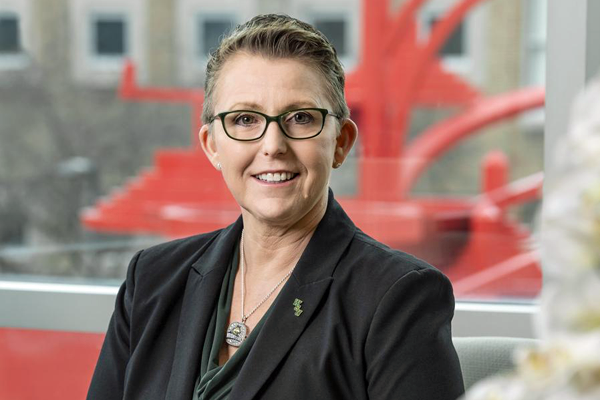
Excerpt from the Dayton Business Journal
Like its peer institutions, Wright State University acted quickly this spring to mitigate disruption to its operations as the Covid-19 pandemic put higher education on standby.
Now that the 2020 fall semester is well underway, the Fairborn institution is exploring new ways to meet the needs of its students and community partners alike.
The DBJ spoke with Susan Edwards, president of Wright State, to learn more about what this semester and the 2021 academic year might look like:
How has the 2020 fall semester been so far?
It has gone pretty well. We really benefited from our students and employees being willing to follow our protocols — wearing masks, socially distancing, working from home, staying at home if they’re sick. That makes it easier.
Some of our success can be attributed to the design of our semester plan. We chose to have a very conservative semester plan, with 70% of our classes being remote and 30% either having a component of in-person and online, or in-person wholly. Making that decision was really difficult, because no matter what we did, we were not going to please everybody. But we haven’t had any interruption, and it’s because our human footprint on the campus is drastically reduced. I joke with the governor that I sometimes have more geese on campus than students.
Our residence halls are just under half full. We were able to provide the opportunity for our students who are living on campus to have single room. That again minimizes spread, which minimizes disruption to operations.
Is WSU developing any long term strategies to attract nontraditional students or online learners?
Our class portfolio — and the flexibility of it — is likely being changed dramatically moving forward. Covid-19 prompted us to offer more remote and online classes than ever before. Those classes are critical to nontraditional students … and those students have been able to continue their work and utiilize the remote possibilities.

